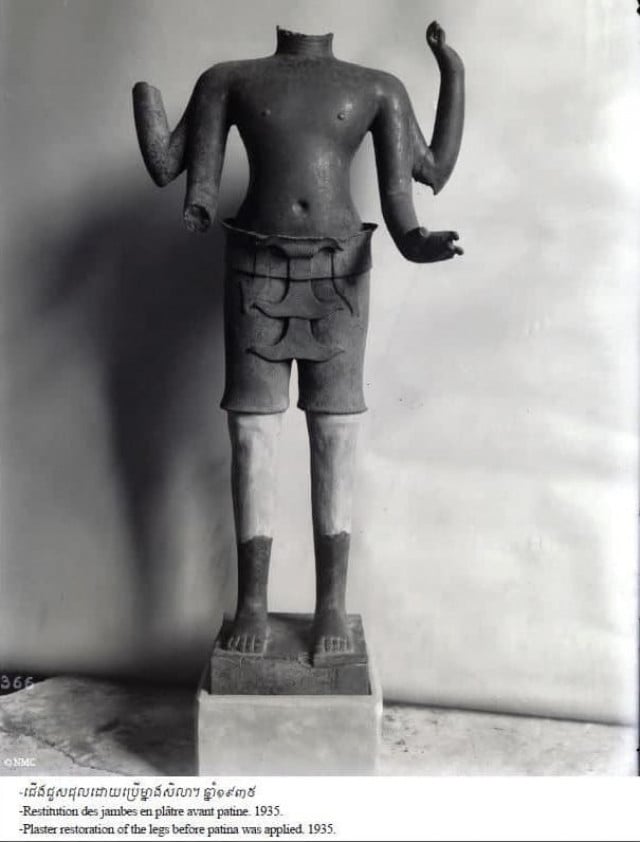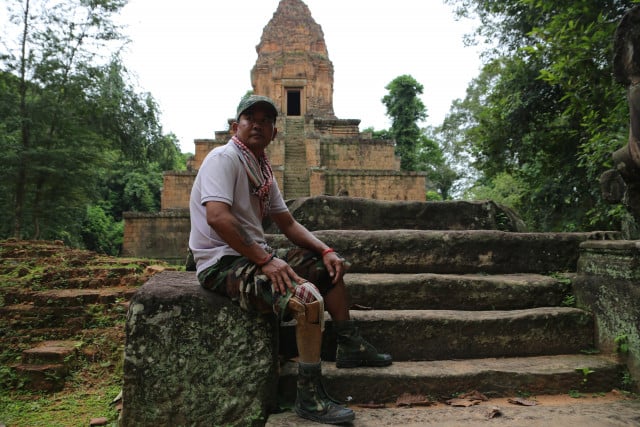Statue of Lokeśvara

- Cambodianess
- April 29, 2021 8:33 AM
PHNOM PENH--The National Museum of Cambodia in collaboration with the École française d'Extrême-Orient (EFEO), or French school of Asian studies, has been holding its first virtual exhibition to commemorate the 100th anniversary of the museum. During the exhibition period, some sculptures and their histories are to be displayed digitally. With the approval from the National Museum of Cambodia, and in contribution to the promotion of Khmer cultural heritage, Cambodianess is pleased to present an overview on "Statue of Lokeśvara."
Brought to the museum in 1935, this large statue was lifted by a fisherman from the Stung Crap, a river flowing toward the Tonle Sap Lake between Battambang and Pursat provinces. The base and feet were separated from the body and a reconstruction of the legs in plaster with a patina finish was created at the School of Cambodian Arts.
An inscription is still legible on the front of the base. It was traced in wax prior to casting. It gives the date of casting in Old Khmer: 892 śaka nu sit, that is, “cast in 892 śaka”, which corresponds to 970-971 CE. This date is in line with the stylistic characteristics of the sculpture, whose attire – in particular a long sampot with fine pleats – suggests a continuation of the Bakheng and Koh Ker styles.
There was some hesitation regarding the identity of this standing male deity depicted with four arms, the left forearms being the only ones to have been preserved. However, doubts seem to have been lifted by the hypothesis that it matches a head in the collection of the Metropolitan Museum of Art in New York. Bearing a miniature Buddha Amithāba in front of its chignon, the head would prove this to be a statue of the bodhisattva Lokeśvara.
Its total height can be estimated at 85 centimetres. Comparison with the older Maitreya of Wat Ampil Teuk in the next display case suggests that the upper hands were also shown with a grasping gesture, sometimes called Kaṭakahasta, like the lower hands, although there is no trace of the attribute they once held.
This sculpture is thought to have come from the site of Tuol Balang, 5 kilometres south-southeast of the village of Anlong Kop. Only a mound surrounded by a moat remains there, with a causeway beside it in the east.
(Anlong Kop (Tuol Balang), Mong Russei District, Battambang Province. 970/971 A.D. Bronze Ga 5166 – inscription K. 847)
Text provided by the National Museum of Cambodia















